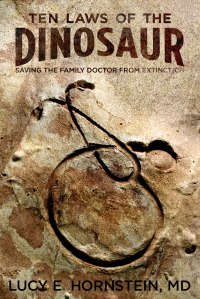“Clinical Pearl”, “Marble Dinosaur Egg”; all the same.
In the wake of Sid Schwab’s most recent post about the surgical aspect of the gall bladder, I’d like to toss in something about how you can tell that your patient could benefit from Sid’s tender ministrations instead of a few weeks of some wonder drug.
Biliary symptoms are by definition things that are caused by some malfunction of the gallbladder, by stones, bile duct obstruction (stones or tumors) and/or that mysterious entity to which Sid alluded, sphincter of Oddi dysfunction. Those symptoms, though, can include nausea, vomiting, pain in assorted locations and other more unusual kinds of gastrointestinal-type distress. How is one to know that a given patient’s queasiness and right shoulder pain is in fact related to the gall bladder and not to the seafood salad and pick-up football game at Sunday’s picnic?
When symptoms are “typical” — nausea, vomiting, right upper quadrant pain 2-3 hours after a fatty meal in a fat, fortyish, fertile, flatulent female — well, the janitor on Scrubs could make that diagnosis. The problem is that biliary symptoms often present atypically.
(An aside in the context of Zebra diagnoses: as a general rule, common things present uncommonly more than uncommon things present at all. What this means is that weird symptoms are more likely an atypical presentation of something ordinary than a zebra.)
There’s an old, probably apochryphal, story of the GP who diagnosed his 45-year-old male patient with left shoulder blade pain with gall stones. How did you know it was gall stones, asks the incredulous housestaff. Simple, replied the old-timer. That’s how his father’s gallstones presented, and his grandfather’s gallstones and his uncle’s gallstones.
Here’s the key: while symptoms may be atypical (epigastric pain instead of right upper quadrant is common) it’s the timing — post-prandially (after eating) — that usually indicates the biliary tract as the source of symptoms. Whenever you have a patient with any kind of gastrointestinal symptoms about 2-3 hours after eating (if it’s a fatty meal, it’s a gimme) think gall bladder early. Ultrasounds are cheap, usually easy to get and generally very reliable for this diagnosis.

I frequently request the ICU nurses with whom I work never to ask me two questions should I be in their care: 1) Do you know what day it is? Heck, I don’t even know that now. 2) Do you know who the president is? That will just put me over the edge and they’ll have to call a code.
By: gammakath on December 6, 2012
at 9:53 am